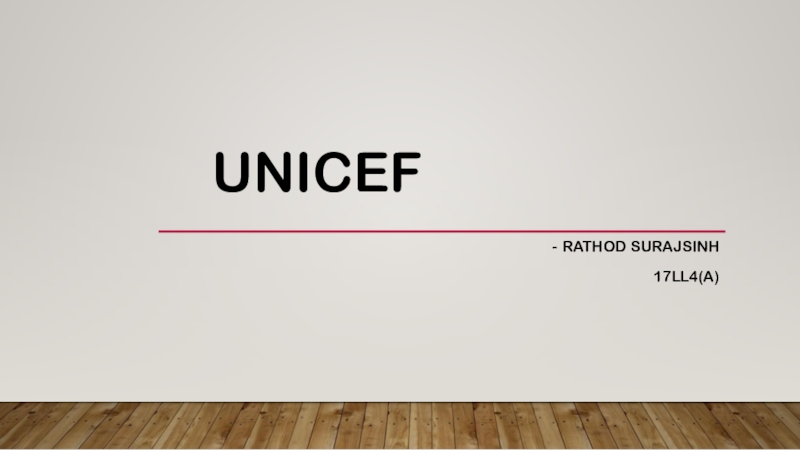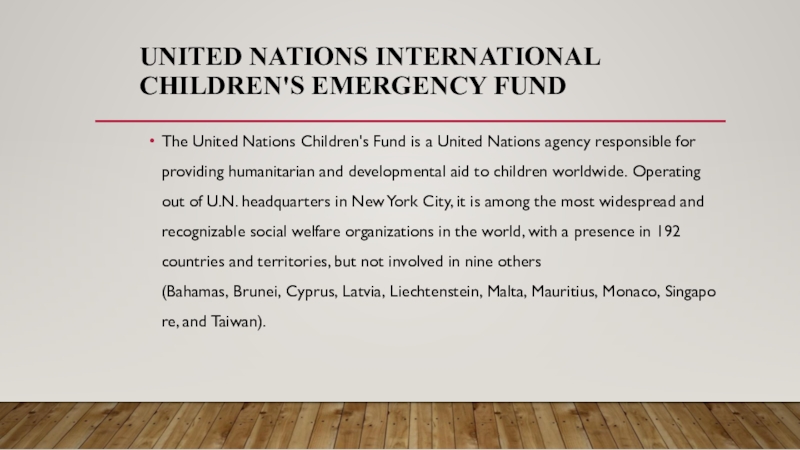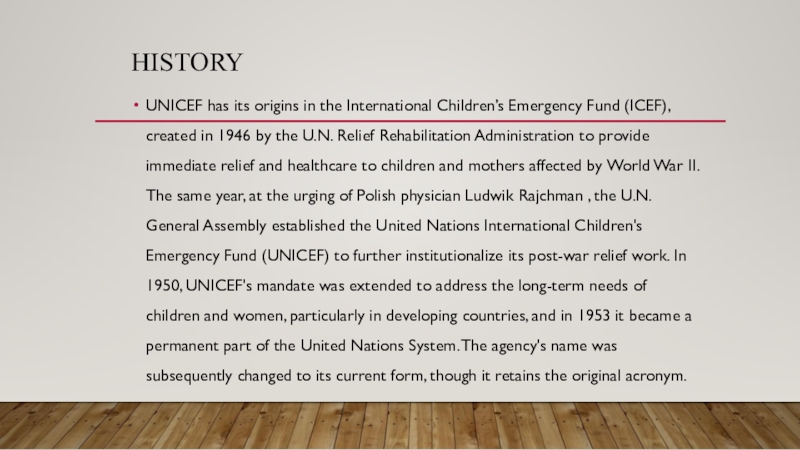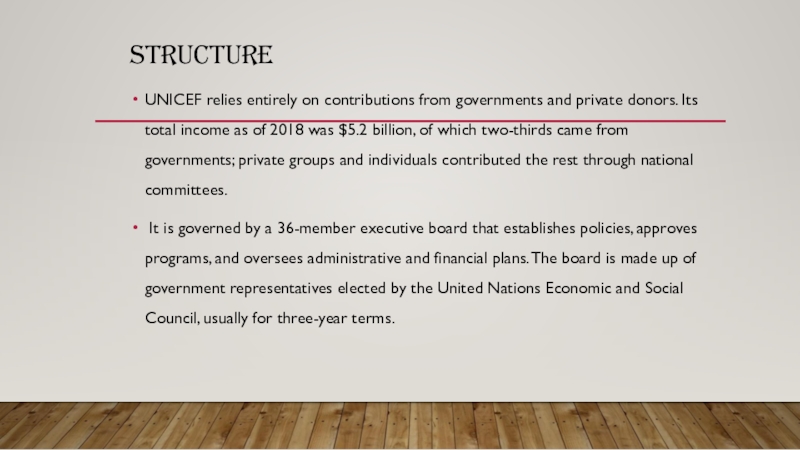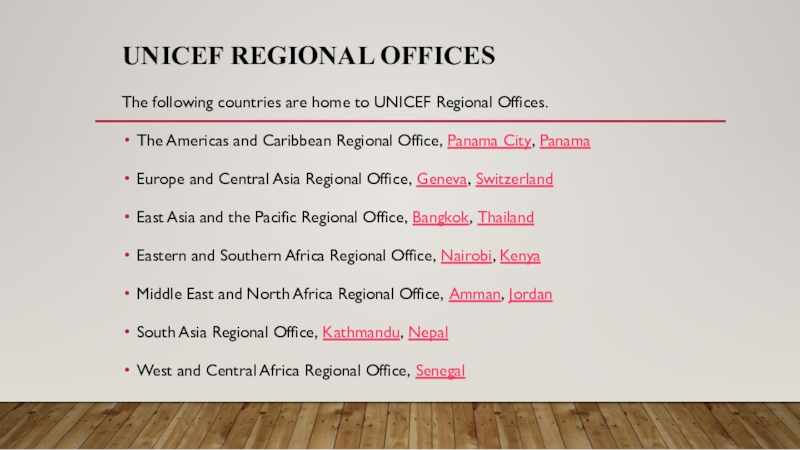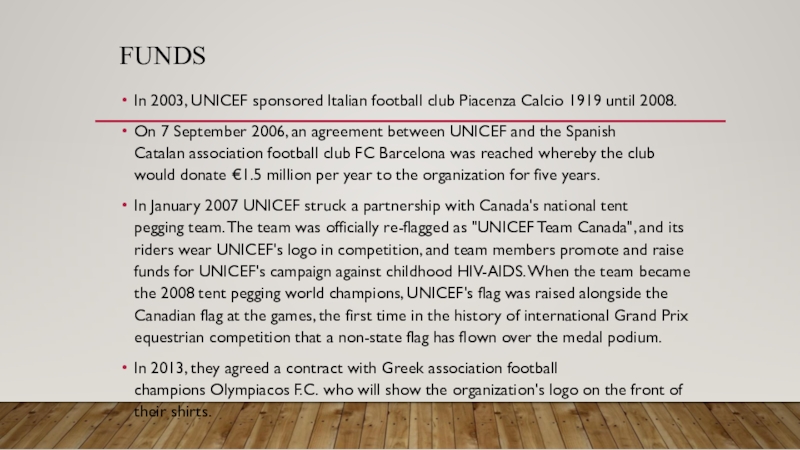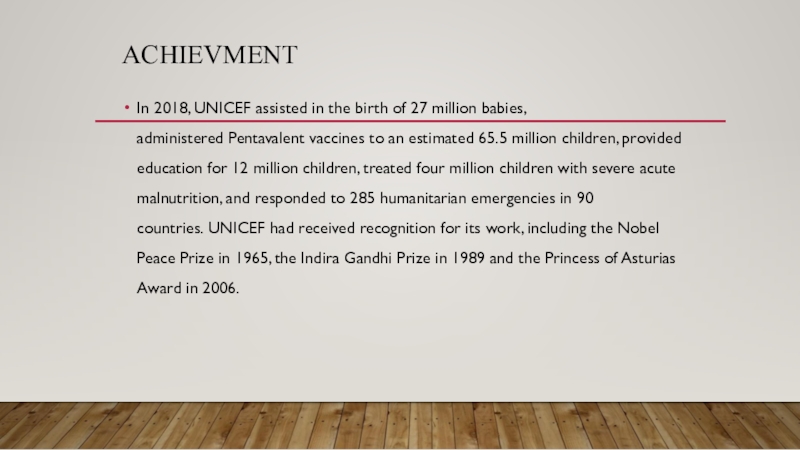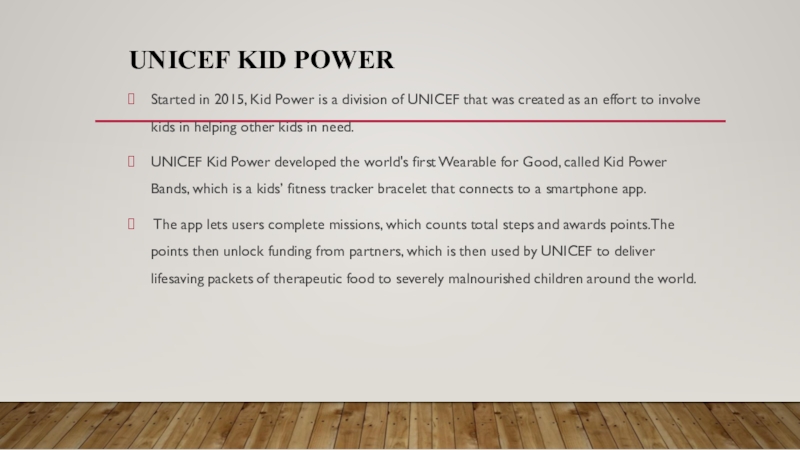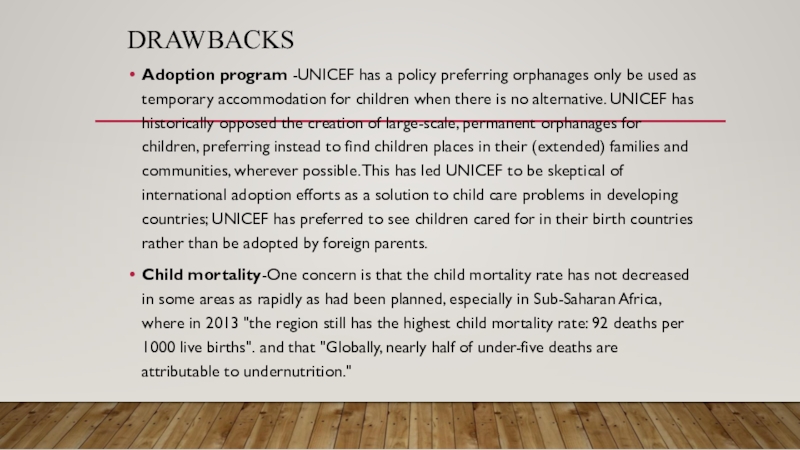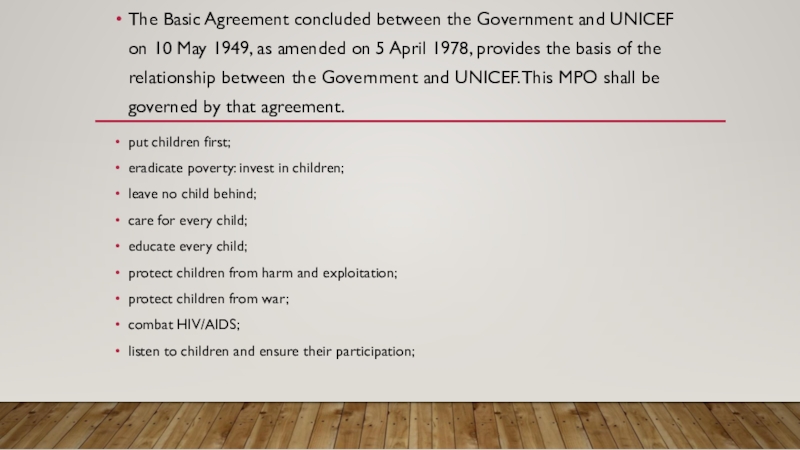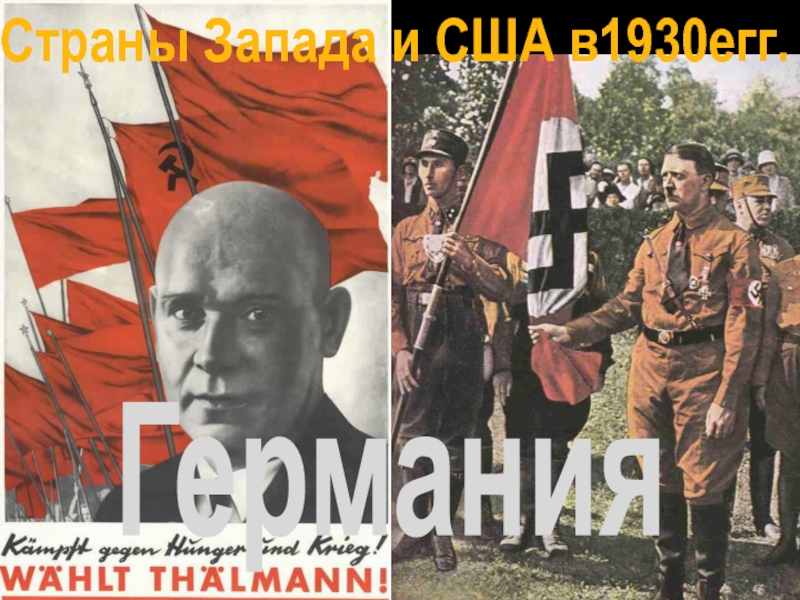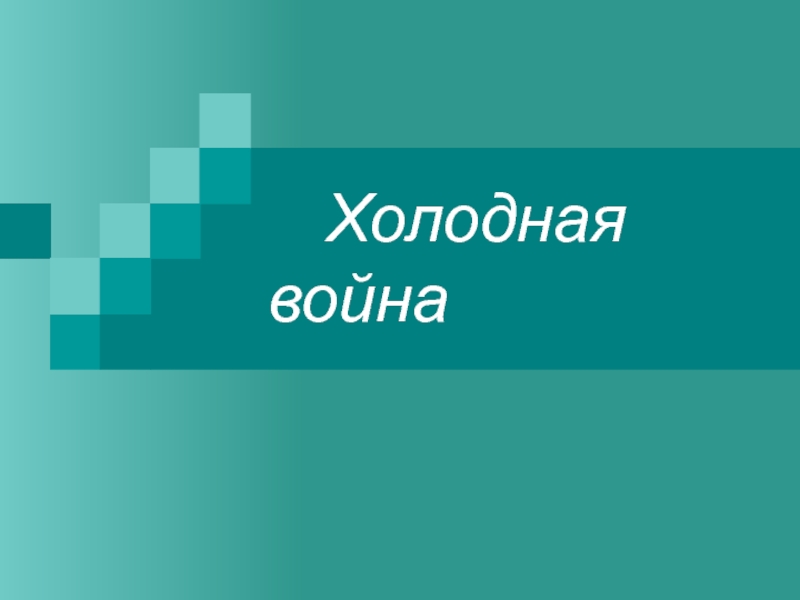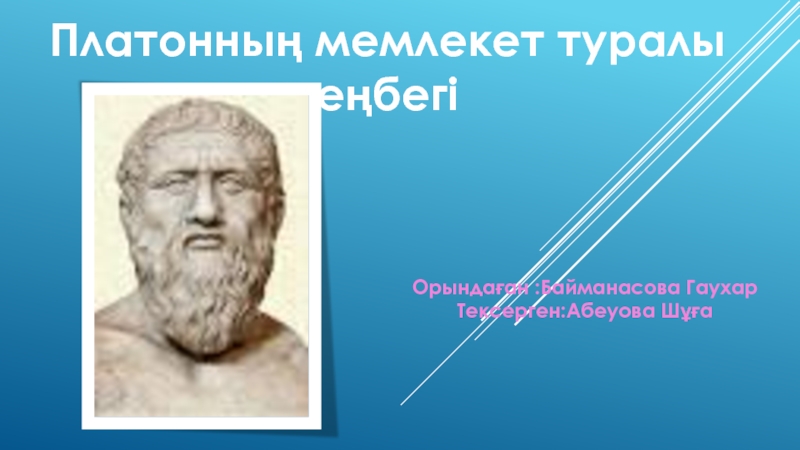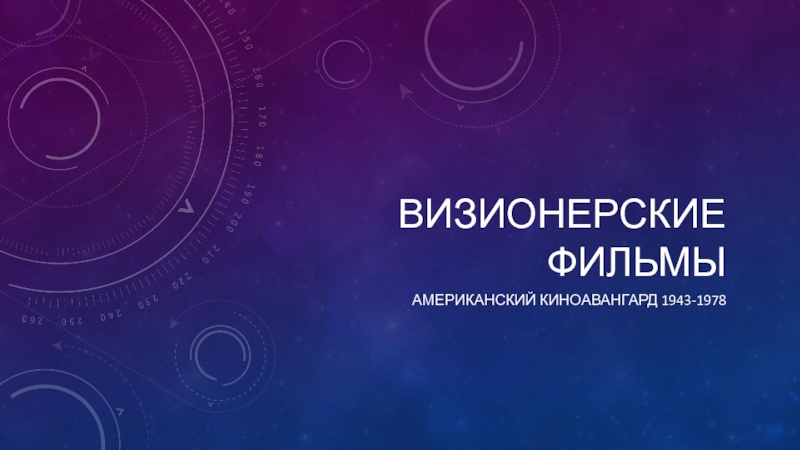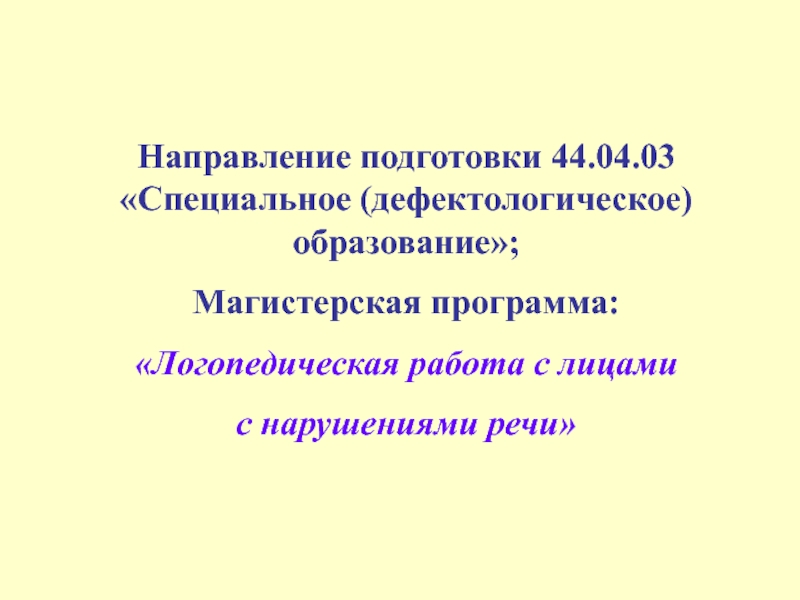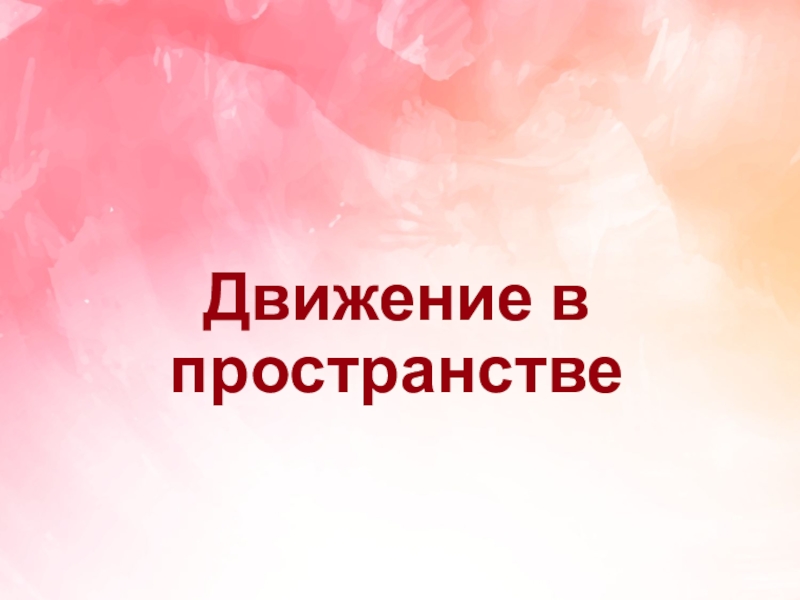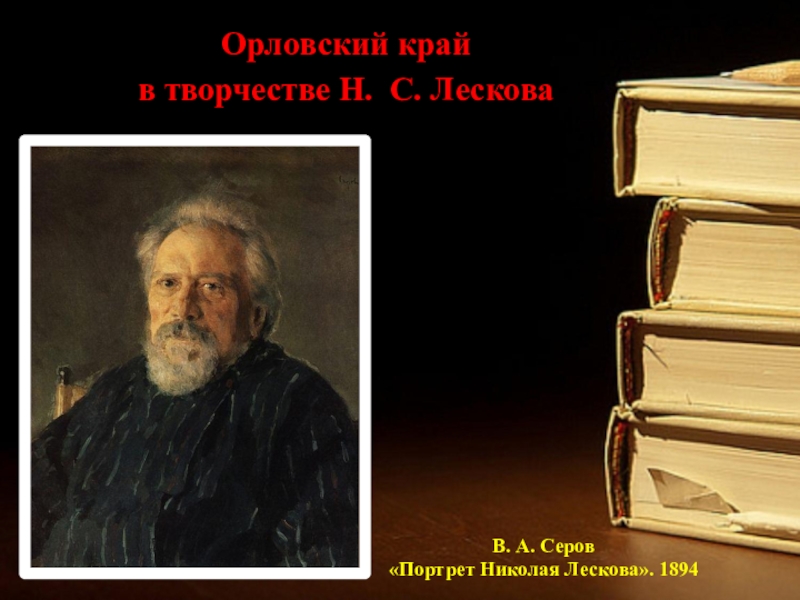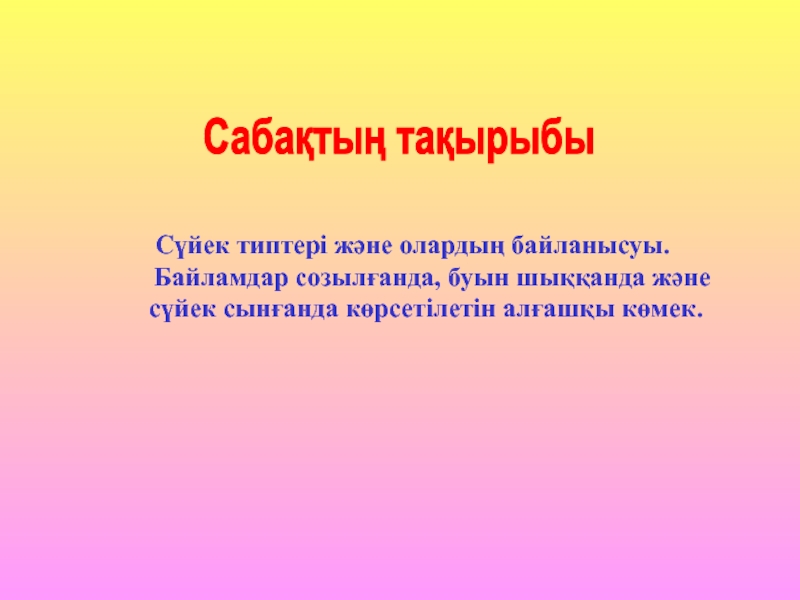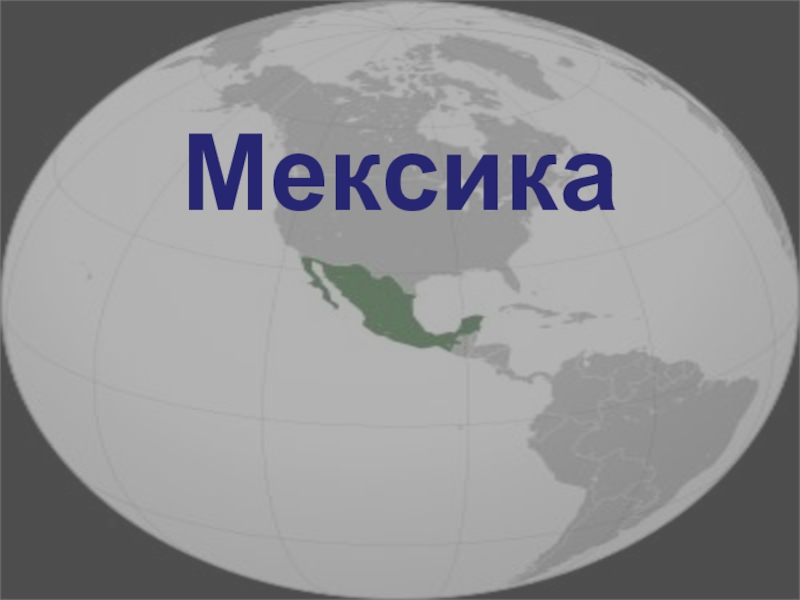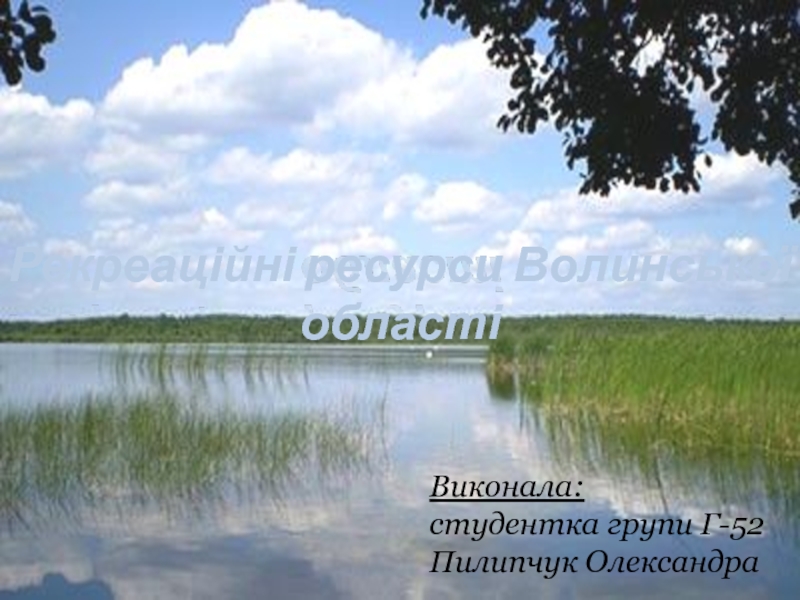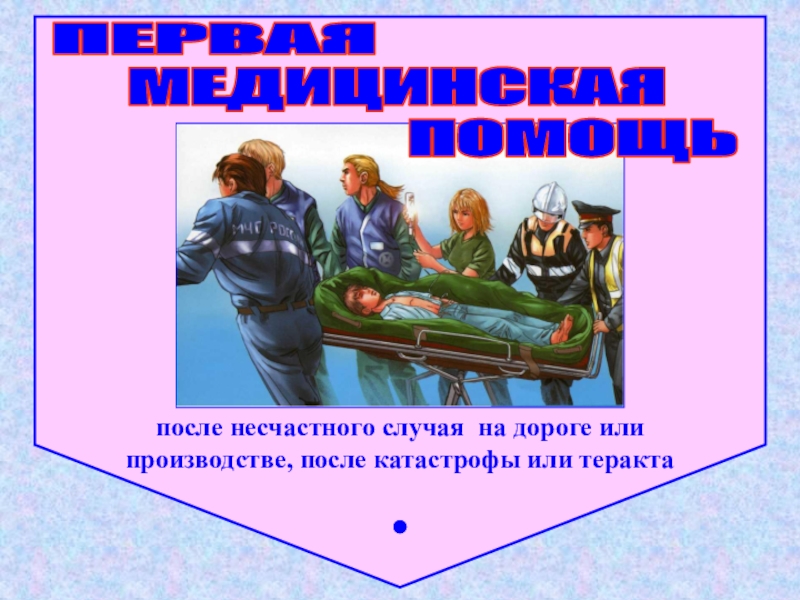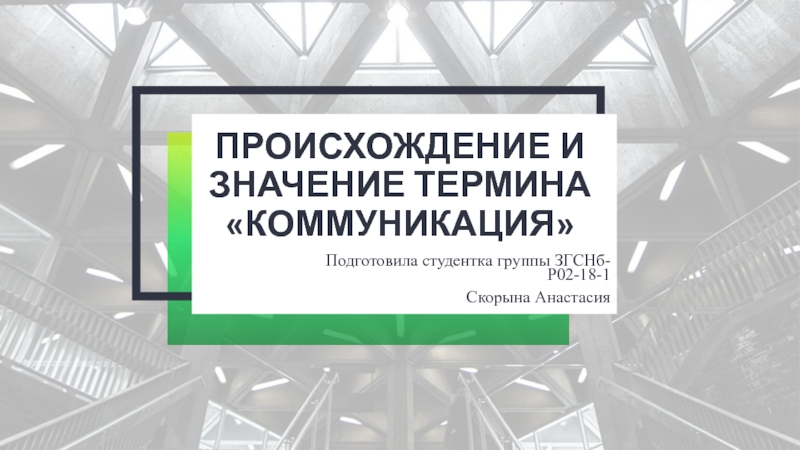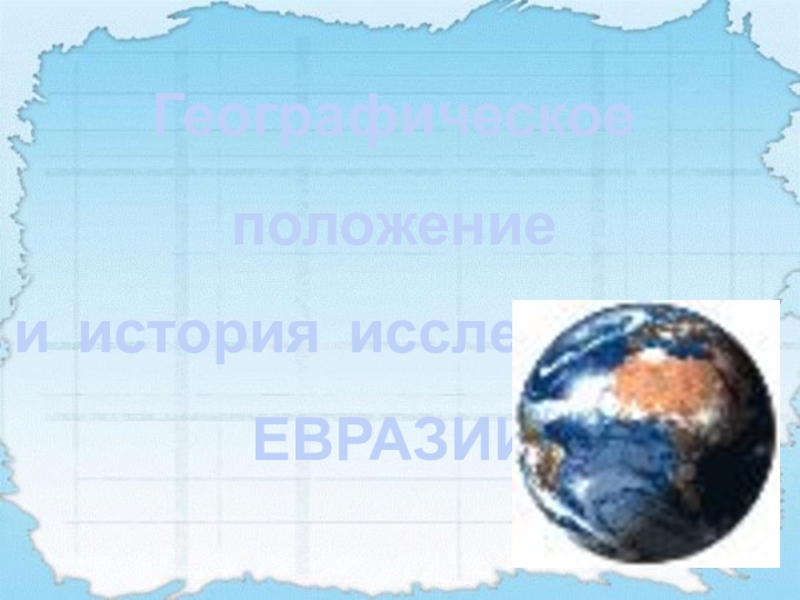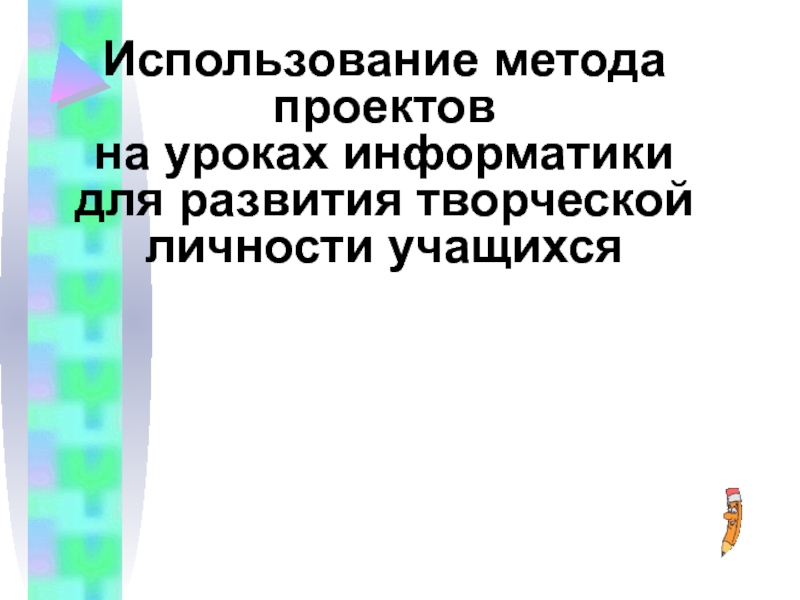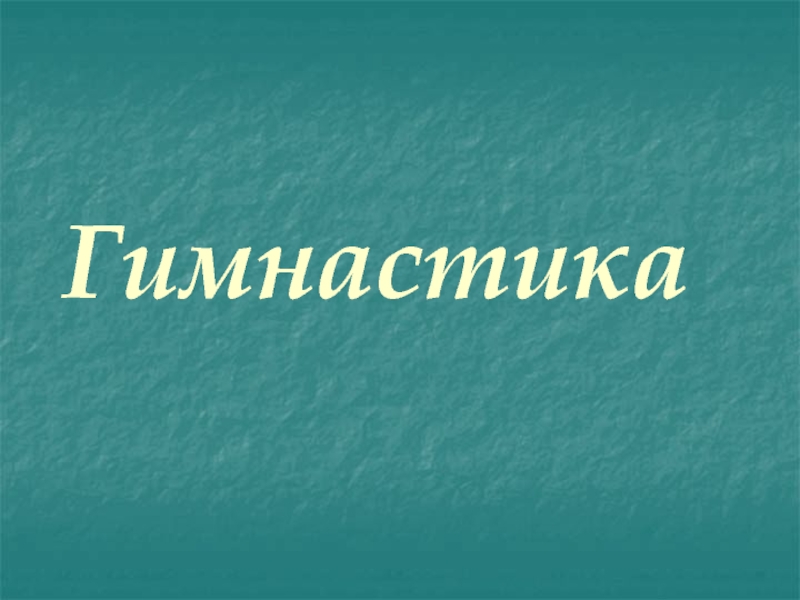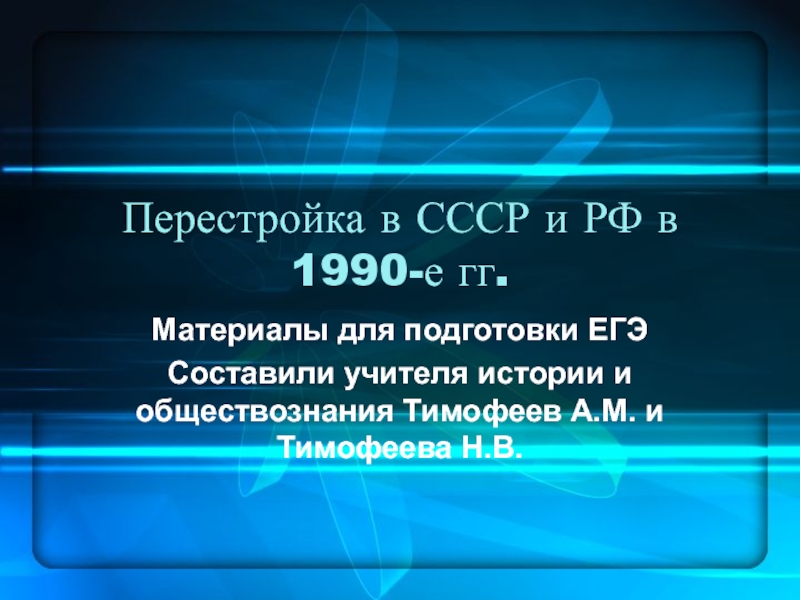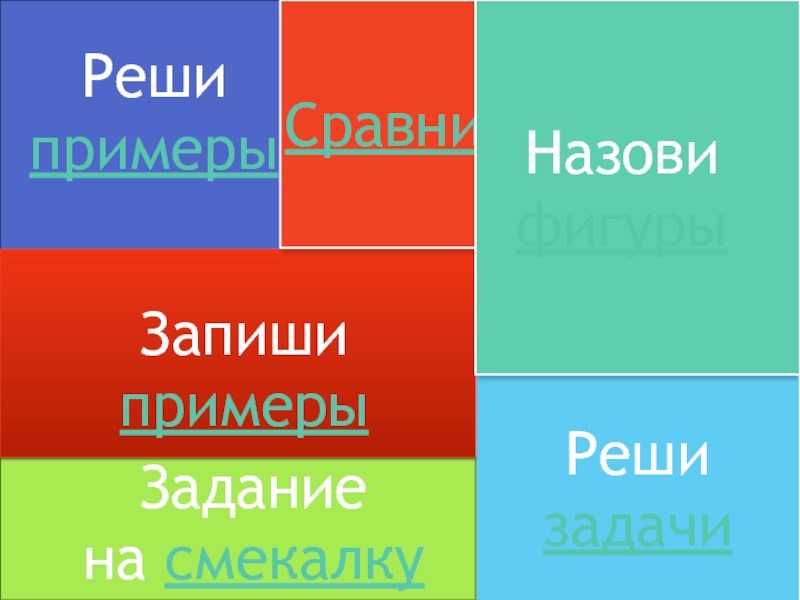Разделы презентаций
- Разное
- Английский язык
- Астрономия
- Алгебра
- Биология
- География
- Геометрия
- Детские презентации
- Информатика
- История
- Литература
- Математика
- Медицина
- Менеджмент
- Музыка
- МХК
- Немецкий язык
- ОБЖ
- Обществознание
- Окружающий мир
- Педагогика
- Русский язык
- Технология
- Физика
- Философия
- Химия
- Шаблоны, картинки для презентаций
- Экология
- Экономика
- Юриспруденция
UNICEF
Содержание
- 1. UNICEF
- 2. United Nations International Children's Emergency FundThe United Nations
- 3. HistoryUNICEF has its origins in the International Children’s
- 4. StructureUNICEF relies entirely on contributions from governments
- 5. UNICEF Regional OfficesThe following countries are home
- 6. FundsIn 2003, UNICEF sponsored Italian football club Piacenza
- 7. AchievmentIn 2018, UNICEF assisted in the birth
- 8. UNICEF Kid PowerStarted in 2015, Kid Power
- 9. DrawbacksAdoption program -UNICEF has a policy preferring
- 10. The Basic Agreement concluded between the Government
- 11. Скачать презентанцию
United Nations International Children's Emergency FundThe United Nations Children's Fund is a United Nations agency responsible for providing humanitarian and developmental aid to children worldwide. Operating out of U.N. headquarters in New York City, it is among the most
Слайды и текст этой презентации
Слайд 2United Nations International Children's Emergency Fund
The United Nations Children's Fund is a United
Слайд 3History
UNICEF has its origins in the International Children’s Emergency Fund (ICEF),
created in 1946 by the U.N. Relief Rehabilitation Administration to provide immediate
relief and healthcare to children and mothers affected by World War II. The same year, at the urging of Polish physician Ludwik Rajchman , the U.N. General Assembly established the United Nations International Children's Emergency Fund (UNICEF) to further institutionalize its post-war relief work. In 1950, UNICEF's mandate was extended to address the long-term needs of children and women, particularly in developing countries, and in 1953 it became a permanent part of the United Nations System. The agency's name was subsequently changed to its current form, though it retains the original acronym.Слайд 4Structure
UNICEF relies entirely on contributions from governments and private donors.
Its total income as of 2018 was $5.2 billion, of
which two-thirds came from governments; private groups and individuals contributed the rest through national committees.It is governed by a 36-member executive board that establishes policies, approves programs, and oversees administrative and financial plans. The board is made up of government representatives elected by the United Nations Economic and Social Council, usually for three-year terms.
Слайд 5UNICEF Regional Offices
The following countries are home to UNICEF Regional
Offices.
The Americas and Caribbean Regional Office, Panama City, Panama
Europe and Central Asia
Regional Office, Geneva, SwitzerlandEast Asia and the Pacific Regional Office, Bangkok, Thailand
Eastern and Southern Africa Regional Office, Nairobi, Kenya
Middle East and North Africa Regional Office, Amman, Jordan
South Asia Regional Office, Kathmandu, Nepal
West and Central Africa Regional Office, Senegal
Слайд 6Funds
In 2003, UNICEF sponsored Italian football club Piacenza Calcio 1919 until 2008.
On
7 September 2006, an agreement between UNICEF and the Spanish
Catalan association football club FC Barcelona was reached whereby the club would donate €1.5 million per year to the organization for five years.In January 2007 UNICEF struck a partnership with Canada's national tent pegging team. The team was officially re-flagged as "UNICEF Team Canada", and its riders wear UNICEF's logo in competition, and team members promote and raise funds for UNICEF's campaign against childhood HIV-AIDS. When the team became the 2008 tent pegging world champions, UNICEF's flag was raised alongside the Canadian flag at the games, the first time in the history of international Grand Prix equestrian competition that a non-state flag has flown over the medal podium.
In 2013, they agreed a contract with Greek association football champions Olympiacos F.C. who will show the organization's logo on the front of their shirts.
Слайд 7Achievment
In 2018, UNICEF assisted in the birth of 27 million
babies, administered Pentavalent vaccines to an estimated 65.5 million children, provided education
for 12 million children, treated four million children with severe acute malnutrition, and responded to 285 humanitarian emergencies in 90 countries. UNICEF had received recognition for its work, including the Nobel Peace Prize in 1965, the Indira Gandhi Prize in 1989 and the Princess of Asturias Award in 2006.Слайд 8UNICEF Kid Power
Started in 2015, Kid Power is a division
of UNICEF that was created as an effort to involve
kids in helping other kids in need.UNICEF Kid Power developed the world's first Wearable for Good, called Kid Power Bands, which is a kids’ fitness tracker bracelet that connects to a smartphone app.
The app lets users complete missions, which counts total steps and awards points. The points then unlock funding from partners, which is then used by UNICEF to deliver lifesaving packets of therapeutic food to severely malnourished children around the world.
Слайд 9Drawbacks
Adoption program -UNICEF has a policy preferring orphanages only be
used as temporary accommodation for children when there is no
alternative. UNICEF has historically opposed the creation of large-scale, permanent orphanages for children, preferring instead to find children places in their (extended) families and communities, wherever possible. This has led UNICEF to be skeptical of international adoption efforts as a solution to child care problems in developing countries; UNICEF has preferred to see children cared for in their birth countries rather than be adopted by foreign parents.Child mortality-One concern is that the child mortality rate has not decreased in some areas as rapidly as had been planned, especially in Sub-Saharan Africa, where in 2013 "the region still has the highest child mortality rate: 92 deaths per 1000 live births". and that "Globally, nearly half of under-five deaths are attributable to undernutrition."
Слайд 10The Basic Agreement concluded between the Government and UNICEF on
10 May 1949, as amended on 5 April 1978, provides
the basis of the relationship between the Government and UNICEF. This MPO shall be governed by that agreement.put children first;
eradicate poverty: invest in children;
leave no child behind;
care for every child;
educate every child;
protect children from harm and exploitation;
protect children from war;
combat HIV/AIDS;
listen to children and ensure their participation;
